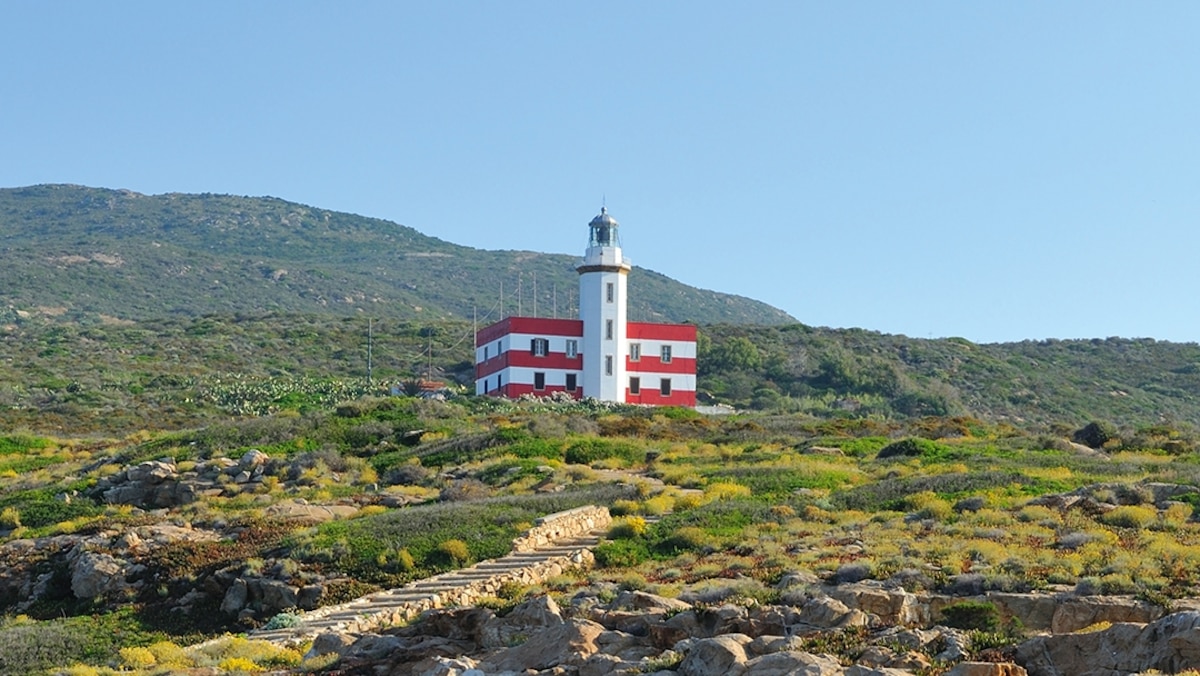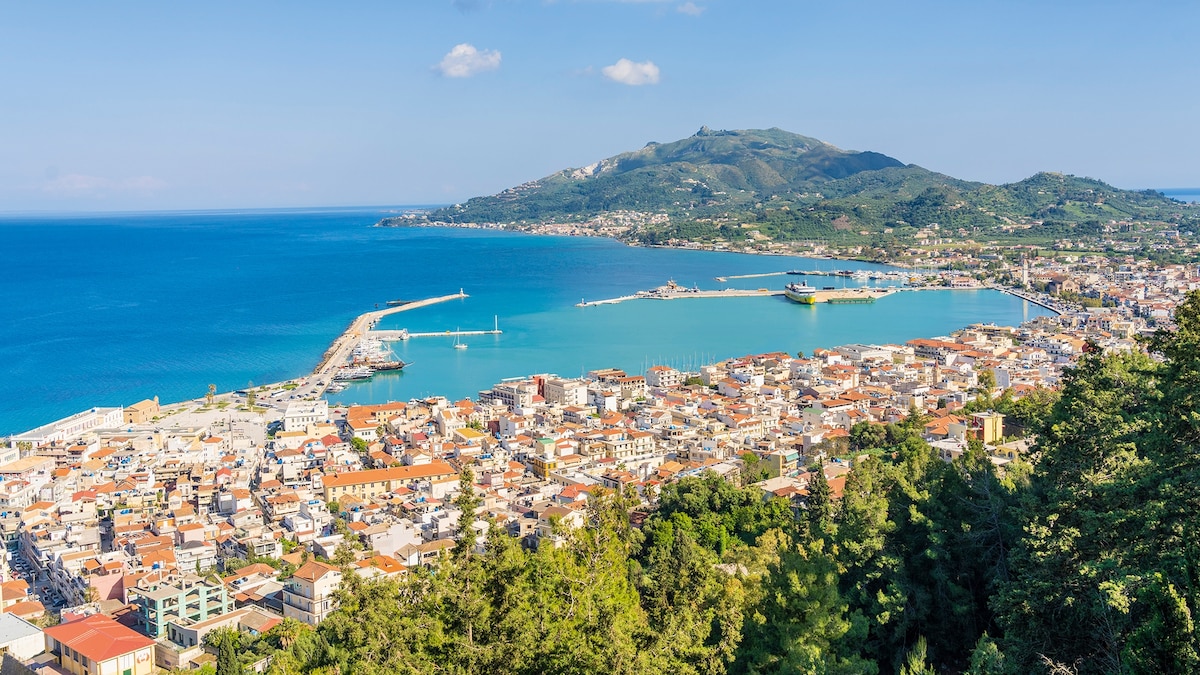Now Reading: What it’s like to stay in a lighthouse on a Tuscan island
-
01
What it’s like to stay in a lighthouse on a Tuscan island
What it’s like to stay in a lighthouse on a Tuscan island

This article was produced by National Geographic Traveller (UK).
This unique retreat – a converted lighthouse on the southernmost tip of Giglio island – comes with its own helipad. But for your average traveller, making pilgrimage to its remote setting is integral to its charm. Travel out to the Tuscan isthmus of Argentario for the ferry from Porto Santo Stefano, an hour across the turquoise Tyrrhenian to arrive in Giglio Port. Follow the island’s coastal road until it turns to a red sandy trail at Punta di Capel Rosso, where it’s a steep hike down through groves of cliff-clinging cactus to reach your quarry: a striking red-and-white-striped beacon atop terracotta cliffs. The lighthouse starred in 2013 Italian film, The Great Beauty, and its cinematic beams can be seen from Rome’s Cinecittà movie studios, some 23 miles away.
The scene
Around an hour from Tuscany’s coast, northwest of Rome, rising from the deep turquoise of the Tyrrhenian Sea, Giglio is a green, serene island just five miles long and three miles wide. It has been self-sufficient for centuries, has steep coastal cliffs and a mountainous interior lined with the vestiges of the ancient drystone terraces that once divided the island into plots of vegetables and grains, olives and vines. A web of red, sandy donkey tracks traverses the rocky terrain, linking the island’s three hamlets, which are home to communities traditionally fed by trammel fishermen, whose floating nets bring in everything from red mullet and bream to lobster and squid.
Today, there are fewer fishermen and a few more paved roads, and those rocky tracks see traffic from hikers rather than donkeys. Trails weave through protected woodland and dense groves of holm oak, chestnut and olive trees, which cling tenaciously to cliffs. They lead down to deep coves where staggeringly clear waters attract swimmers, kayakers and yachtsmen, along with pods of passing cetaceans. Castle-like fari (lighthouses) guard the rugged, largely undeveloped coastline, which, in a handful of secluded bays, opens onto half-moons of sunshine-yellow sand.

Giglio Porto is the island’s main town and sole port.
Photograph by arkanto, Alamy
The last of Giglio’s functioning fari, on the island’s largely uninhabited southernmost tip, is a red-and-white-striped beacon that doubles as one of Tuscany’s most unusual guesthouses. Built in 1883, Faro Capel Rosso sits in exquisite solitude on a promontory of protected woodland. This remote retreat is accessed by a 20-minute hike along a steep, boulder-strewn sandy trail (backpacks only) or a flight to the cliffside heliport. The lighthouse, which was part-converted into a guesthouse that opened in 2023, has granite steps that descend to deep coves secluded by boulders, via sculptural groves of prickly pear cactus and Mediterranean scrub fragrant with wild thyme and oregano. Turquoise water beckons, and several species of whale and dolphin come to feed here at the confluence of two water currents.
Summer on this Tuscan island is busiest, but with a hot, dry microclimate, Giglio enjoys swimming weather well into November. May to September is the peak season for boating, sailing and diving — with most activities bookable from the lighthouse’s small dock. Hiking the island’s network of trails, which lead out from the doorstep, is best in shoulder season, and October coincides with the olive harvest. For the past few years, local producer Olio Goffo has been restoring Giglio’s centuries-old groves, which had run wild across the hillsides. The company organises tastings of its rich, green extra virgin olive oil at a spot above Campese Beach to the northwest.

One of Faro Capel Rosso’s four suites that have been converted from lodgings for the lighthouse keeper.
Photograph by Viola Mura, Faro Capel Rosso
The stay
Expect spellbinding seclusion at this Wes Anderson-style edifice. The four rooms that housed keepers’ families until the lighthouse’s automation in the 1980s are now capacious suites, with free-standing tubs and windows framing sea and sky; it’s as if you’ve set sail from your bed. Cleverly converted bits of seafaring kit double as lamps and tables — all interspersed with local art, including jelly fish-like bronze ceiling pendants by Florentine artist Matteo Pierozzi, which scatter light like sunbeams over water.
Charming resident housekeepers Davide and Carla Moglie host simple breakfasts and communal home-cooked dinners. They can pack picnics on request and days are spent hiking, swimming and staring at the immense blue until the lighthouse springs to life at dusk, sending its steady beams into the night. With a 23-mile range, it’s visible from Rome. There’s virtually zero light pollution elsewhere on the island, and stargazing takes on an almost cinematic scope from the roof terrace, directly under the slow strobe of the rotating optic.
Published in the March 2025 issue of National Geographic Traveller (UK).
To subscribe to National Geographic Traveller (UK) magazine click here. (Available in select countries only).






















